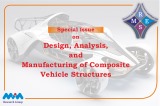Technical Note
Economizing the road drainage construction’s cost using standard design, offsetting and setting out method: a case study of Ogbomoso – Oko – Osogbo Road, Nigeria
Abiodun Kilani, Christopher Fapohunda
Department of Civil Engineering, Faculty of Engineering, Federal University Oye - Ekiti, Ekiti – State; Nigeria
Keywords
Abstract
Design;
Highway;
Drainage;
Intersectional point;
Concrete line-drain;
Cost of construction
Construction of good roads for the citizens is one of the major duties of the government of a nation. In some nations of the world today, especially some developing nations, many of the federal roads constructed were not performing up to their designed expectations, thus, causing formation of potholes, road surfaces cracking, swaying of road surfaces, road accidents and bad road-drainage structure. The poor drainage system contributed highly to these road defects. Hence, this article provides the standard design and setting out measures for drainage’s construction, and for the reduction in its construction cost. In the experiment, the theodolite device was set at an intersectional point (I.P) from chain-ages 8 + 250 to 8 + 417 of Ogbomoso – Oko -Osogbo road. At each I.P, poles were bisected within I.P to I.P1 and I.P to I.P2.The excavated trenches were marked out with pegs for drainage construction. At the bisection of pole 6 and pole B, the excavated depths of the marked areas were increased by 42.3% and 31.4% than the areas with the mean excavation depths compared with other points. Thus, the costs of drainage construction at those points were increased by $2,175.58 and $1,277.32 respectively. This resulted into inflation in the costs of drainage construction at those areas. This construction cost increment was controlled by effective taken off, accurate quantification of project works and standard project’s cost estimation. It was concluded that accurate design calculations, good drainage’s setting out and project’s cost estimation will prevent the construction engineers from run into lost or have excessive spending during the construction of drainage system.
© 2022 MIM Research Group. All rights reserved.

